Disaster Relief Transformed by Lida Group’s Prefab Mobile Houses Offering Rapid, Easy-Assemble Shelter with Low-Cost Durability
2025-Oct-09 17:20:43
By Admin
1. Introduction: The Urgent Need for Effective Disaster Relief Shelter
Natural disasters—from earthquakes and hurricanes to floods and wildfires—strike with devastating frequency across the globe, leaving a trail of destruction in their wake. Each year, millions of people are displaced, losing their homes, belongings, and in some cases, their loved ones. The immediate aftermath of a disaster is a critical window: survivors need safe, secure shelter to protect themselves from the elements, avoid exposure-related illnesses, and begin the long process of recovery. Yet, traditional disaster relief shelter solutions have long fallen short of meeting this urgent need.
For decades, emergency shelter has often relied on temporary structures like tents or makeshift huts. While tents can be deployed quickly, they are fragile—easily damaged by strong winds, heavy rain, or extreme temperatures. They offer little insulation, leaving occupants vulnerable to cold nights or scorching days, and they provide minimal privacy, adding to the trauma of displacement. Makeshift huts, constructed from whatever materials are available (such as debris, tarps, or branches), are even less reliable: they lack structural integrity, pose fire risks, and often fail to protect against pests or disease.
Compounding these issues is the cost and logistical complexity of traditional shelter. Shipping large quantities of tents or building materials to disaster zones—many of which are remote or have damaged infrastructure—can be slow and expensive. Local labor shortages, due to displacement or injury, further delay shelter construction, forcing survivors to wait weeks or even months for a stable place to stay. This gap between need and delivery not only prolongs human suffering but also hinders community recovery, as people cannot focus on rebuilding their lives without secure shelter.
Against this backdrop, a transformative solution has emerged: Lida Group’s prefab mobile houses. Designed specifically to address the unique challenges of disaster relief, these houses combine rapid deployment, easy assembly, low cost, and durability—filling a critical void in the global disaster response toolkit. By reimagining what emergency shelter can be, Lida Group is not just providing roofs over heads; it is changing the way the world responds to crisis, turning chaos into stability and despair into hope.
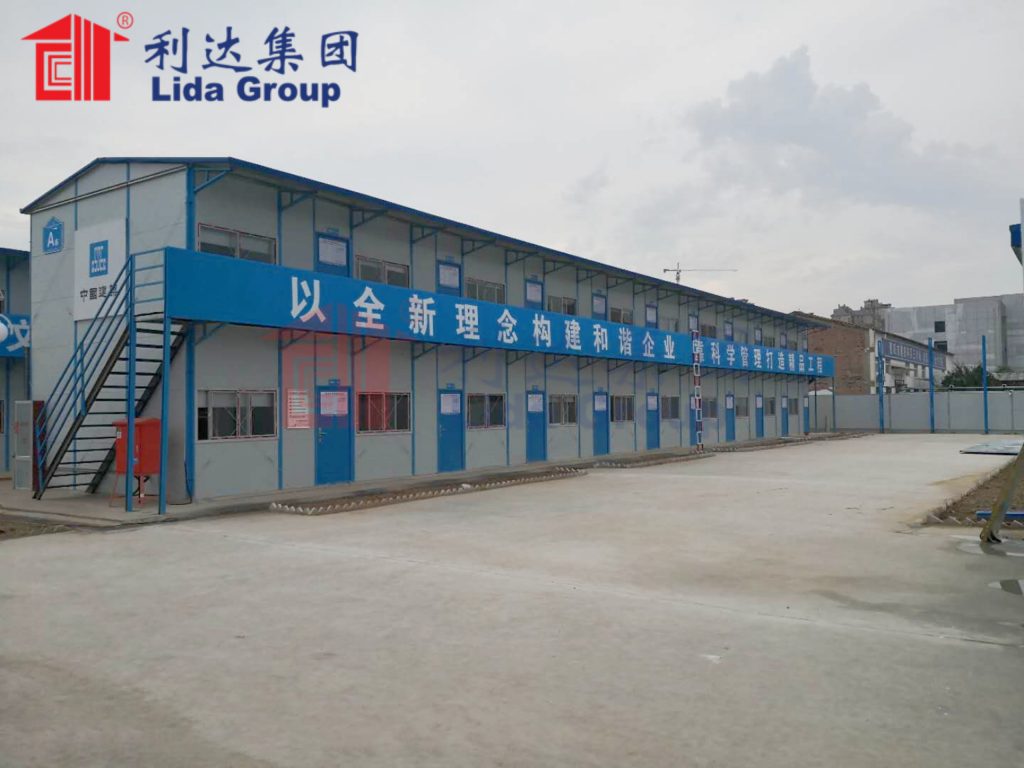
2. Understanding Disaster Relief Shelter Challenges: A Global Perspective
To appreciate the impact of Lida Group’s prefab mobile houses, it is first essential to understand the scale and complexity of the challenges facing disaster relief efforts worldwide. The United Nations Office for Disaster Risk Reduction (UNDRR) reports that between 2000 and 2022, there were over 7,000 recorded natural disasters, affecting more than 4.2 billion people and causing over $2.9 trillion in economic losses. Displacement is a defining consequence: the Internal Displacement Monitoring Centre (IDMC) estimates that in 2022 alone, natural disasters displaced 32.6 million people—more than twice the number displaced by conflict.
2.1 Speed: The Race Against Time
In disaster relief, time is lives. Within the first 72 hours after a disaster—known as the “golden window”—survivors face the highest risk of death from exposure, dehydration, or injury. Yet, traditional shelter solutions often fail to meet this timeline. For example, shipping a shipment of tents from a global warehouse to a remote disaster zone can take 5–10 days, even under ideal conditions. Once on-site, setting up large tent camps requires skilled labor and heavy equipment, which are often in short supply. In 2010, after the Haiti earthquake—one of the deadliest disasters of the 21st century—over 1.5 million people were left homeless. It took months for even basic tent camps to be fully established, and many survivors lived in overcrowded, unsanitary conditions for years.
2.2 Durability: Shelter That Lasts Beyond the Emergency
While speed is critical, durability is equally important. Disaster recovery is not a short-term process; many survivors remain displaced for 6–12 months, and in some cases, years. Tents and makeshift shelters are not designed to withstand prolonged use. In 2013, Typhoon Haiyan struck the Philippines, displacing over 4 million people. The tents provided by aid organizations quickly deteriorated under the country’s harsh tropical weather—heavy rains caused flooding inside, strong winds tore fabric, and intense sunlight faded materials. Within six months, many tents were uninhabitable, forcing survivors to rebuild their shelters repeatedly, diverting energy and resources from long-term recovery.
2.3 Cost: Stretching Limited Relief Budgets
Disaster relief budgets are finite. Governments, NGOs, and international organizations must allocate funds across multiple needs: food, water, medical care, and shelter. Traditional shelter solutions are often more expensive than they initially appear. Tents, for example, may cost \(150–\)300 per unit, but they need to be replaced every 3–6 months in harsh conditions. Additionally, tent camps require ongoing maintenance: repairing damaged tents, providing sanitation facilities, and securing the site—all of which add to the total cost. In 2020, after the Beirut port explosion, the cost of providing tent shelter for 10,000 displaced families exceeded $5 million in the first year alone, not including maintenance.
2.4 Accessibility: Reaching Remote and Hard-to-Reach Areas
Many of the world’s most disaster-prone regions are remote, with poor infrastructure—dirt roads, limited airports, and damaged ports. Traditional shelter materials, such as concrete or steel beams, are heavy and difficult to transport. Tents, while lighter, still require large shipping containers, which can get stuck on damaged roads or delayed at ports. In 2015, after the Nepal earthquake, which struck rural mountain regions, aid organizations struggled to deliver tents to villages accessible only by foot. Many survivors in these areas received no formal shelter at all, relying on whatever they could scavenge.
These challenges—speed, durability, cost, and accessibility—have long plagued disaster relief efforts. Lida Group’s prefab mobile houses were designed to address each of these pain points, offering a solution that is not just better than traditional shelter, but transformative.
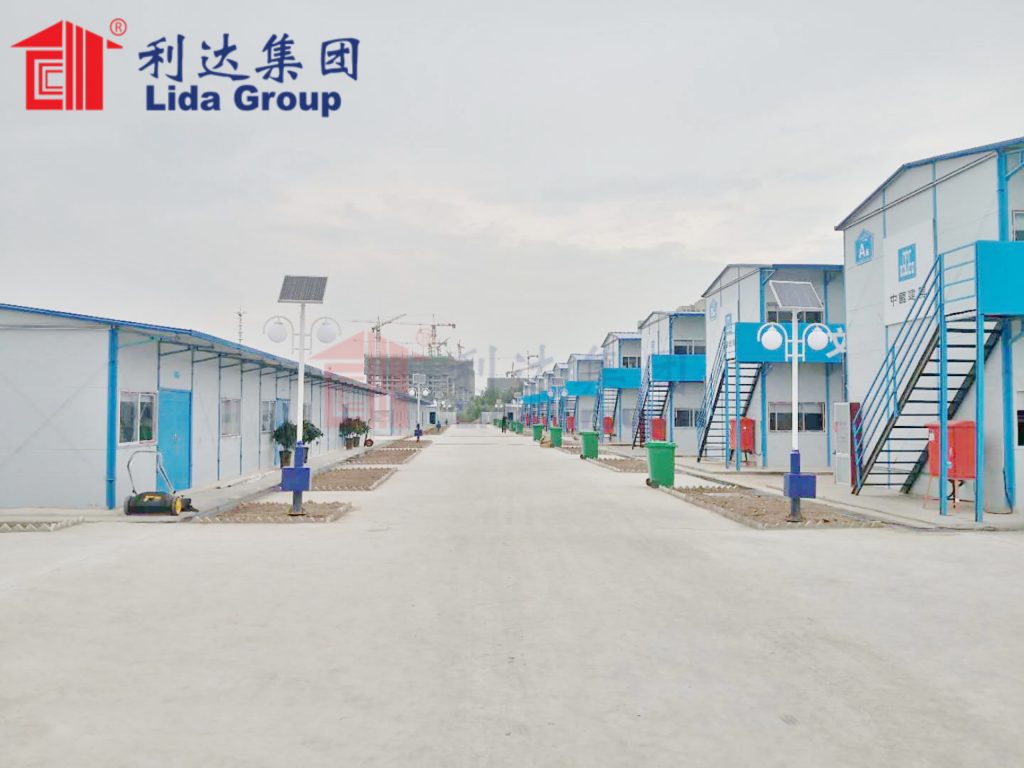
3. Lida Group’s Prefab Mobile Houses: The Design Behind the Innovation
Lida Group, a global leader in prefabricated construction, has spent years researching and developing prefab mobile houses specifically for disaster relief. The company’s approach is rooted in a simple yet powerful idea: emergency shelter should be fast to deploy, easy to assemble, affordable to produce, and durable enough to support long-term recovery. To achieve this, Lida Group has focused on three core design principles: modularity, material innovation, and user-centricity.
3.1 Modular Design: Speed and Flexibility in Every Panel
At the heart of Lida Group’s prefab mobile houses is a modular design. Each house is divided into lightweight, prefabricated modules—walls, floors, roofs, and even internal fixtures like doors and windows—that are manufactured in a factory and shipped to disaster zones. These modules are designed to be compact: a standard 20-square-meter house can be disassembled and packed into a single shipping container, which can hold up to 10 houses at once. This compact design drastically reduces shipping costs and time—containers can be transported by truck, ship, or even helicopter to remote areas, a feat impossible with traditional construction materials.
Once on-site, the modules are incredibly easy to assemble. Unlike traditional construction, which requires skilled labor (carpenters, electricians, masons), Lida Group’s houses can be assembled by a team of 2–3 unskilled workers in just 4–6 hours. The modules feature a simple “click-and-lock” system: walls fit into floor panels with pre-drilled holes, and roofs attach to walls using heavy-duty clips. No specialized tools are needed—just basic hand tools like screwdrivers and wrenches, which are often available locally. This ease of assembly means that shelter can be built quickly, even in areas with labor shortages.
The modular design also offers flexibility. Lida Group’s houses come in three standard sizes—15 square meters (single-person), 25 square meters (small family), and 40 square meters (large family)—but modules can be combined to create larger structures, such as medical clinics, schools, or community centers. In 2021, after a flood in India, Lida Group combined 10 house modules to build a temporary medical clinic, providing much-needed healthcare to 500 survivors daily. This flexibility makes the houses adaptable to the unique needs of each disaster zone.
3.2 Material Innovation: Durability Without the Cost
Durability is a cornerstone of Lida Group’s design, and it starts with the materials used. The company’s prefab mobile houses are constructed using high-quality sandwich panels— the same innovation that has made Lida Group a leader in affordable housing. Sandwich panels consist of two outer layers (made of galvanized steel) and a core layer (made of polyurethane foam or rock wool). This combination offers three key benefits for disaster relief:
- Strength: The galvanized steel outer layers are resistant to corrosion, impact, and fire. They can withstand winds of up to 120 km/h (strong enough to resist most tropical storms) and heavy snow loads (up to 50 kg/m²), making them suitable for a wide range of climates—from the hot, humid tropics to the cold, snowy mountains.
- Insulation: The polyurethane foam or rock wool core provides excellent thermal insulation. In cold weather, the core traps heat inside, keeping the house warm without additional heating. In hot weather, it reflects sunlight and blocks heat, keeping the interior cool. This insulation not only improves comfort for occupants but also reduces the risk of exposure-related illnesses, such as hypothermia or heatstroke.
- Lightweight: Despite their strength, sandwich panels are lightweight—each 2.4-meter wall panel weighs just 15 kg. This lightweight design makes the modules easy to transport and assemble, while still being strong enough to withstand harsh conditions.
Lida Group also uses eco-friendly materials wherever possible. The galvanized steel is 100% recyclable, and the polyurethane foam is low-VOC (volatile organic compound), meaning it does not release harmful chemicals into the air—critical for indoor air quality in small, enclosed spaces. The company also sources materials locally when possible, reducing the carbon footprint of production and supporting local economies.
3.3 User-Centric Features: Shelter That Feels Like Home
Disaster displacement is traumatic, and shelter plays a key role in restoring a sense of normalcy. Lida Group’s prefab mobile houses are designed with user comfort and dignity in mind. Each house includes:
- Windows and Ventilation: Large, shatterproof windows provide natural light and fresh air, reducing the need for artificial lighting and improving mental health. Adjustable vents in the roof and walls allow for cross-ventilation, preventing mold growth (a common problem in tents and makeshift shelters).
- Privacy: Unlike tents, which offer little to no privacy, Lida Group’s houses have solid walls and lockable doors. For families, this means a safe space to sleep, eat, and care for children without fear of intrusion.
- Basic Utilities: Each house is pre-wired for electricity and includes mounting points for solar panels (a critical feature in disaster zones with damaged power grids). It also has a simple plumbing system that can be connected to portable water tanks and sanitation facilities, such as composting toilets.
- Storage Space: Built-in shelves and cabinets provide space for personal belongings, helping survivors keep their few remaining possessions organized and safe.
These features may seem small, but they have a profound impact on survivor well-being. In a 2022 survey of survivors who lived in Lida Group’s houses after a flood in Bangladesh, 87% reported feeling “safer and more secure” compared to their previous shelter (tents or makeshift huts), and 76% said the houses helped them “feel like they had a home again.”
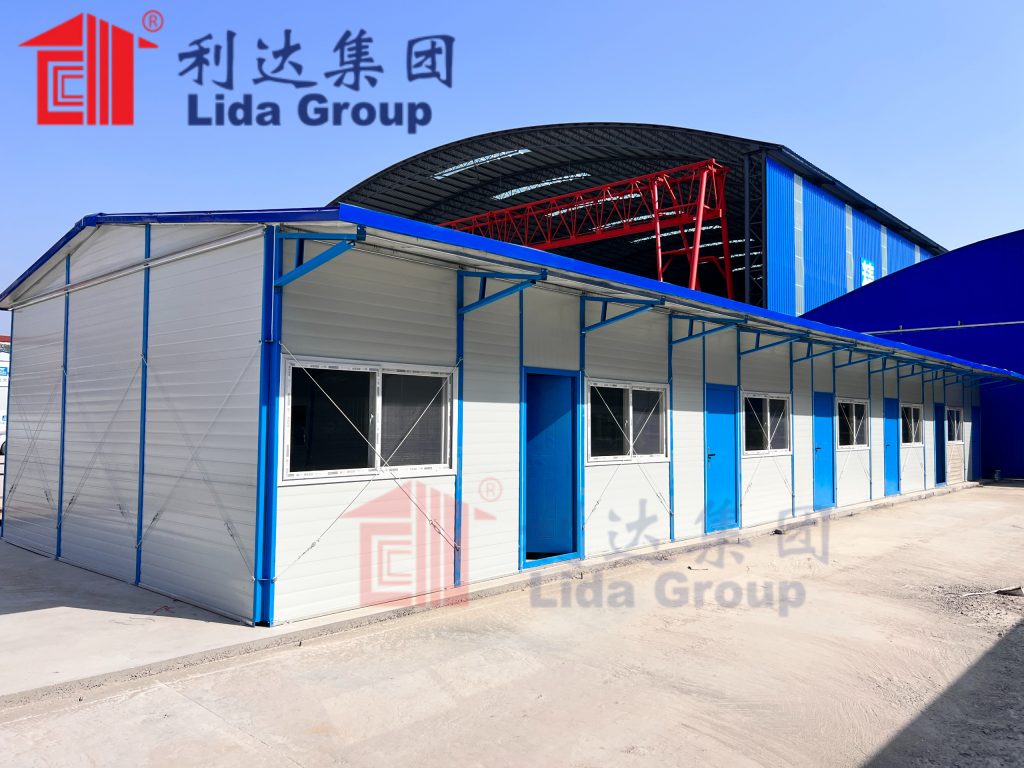
4. Real-World Impact: Case Studies of Lida Group’s Prefab Mobile Houses in Disaster Relief
Numbers and designs tell part of the story, but real-world application is where Lida Group’s prefab mobile houses truly shine. Over the past decade, the company has deployed its houses in dozens of disaster zones across Asia, Africa, and the Americas, transforming relief efforts and improving outcomes for survivors. Below are three detailed case studies that highlight the houses’ impact.
4.1 Case Study 1: 2015 Nepal Earthquake – Rapid Shelter for Mountain Communities
On April 25, 2015, a 7.8-magnitude earthquake struck Nepal, killing over 8,800 people and displacing more than 2.8 million. The earthquake was particularly devastating in rural mountain regions, where most homes—built from mud and stone—collapsed entirely. Roads and bridges were destroyed, making it nearly impossible to deliver traditional shelter materials to remote villages.
Lida Group responded within 48 hours, shipping 500 prefab mobile house modules to Nepal via India. The modules were transported by truck to the city of Kathmandu, then loaded onto helicopters for delivery to villages in the Langtang Valley—a remote region that was one of the hardest hit. Once on-site, local volunteers (trained by Lida Group’s team of 10 engineers) assembled the houses. A team of 3 volunteers could assemble one 25-square-meter house in just 5 hours—far faster than the weeks it would have taken to build a traditional hut.
By the end of May 2015—just one month after the earthquake—Lida Group had deployed 350 houses in 12 mountain villages. The houses proved to be durable: when a 7.3-magnitude aftershock struck on May 12, none of the houses were damaged. They also withstood the harsh Nepali monsoon season, which brought heavy rains and landslides. Survivors reported that the houses stayed dry and warm, even during the wettest weeks.
The impact extended beyond shelter. In the village of Kyanjin Gompa, Lida Group combined 5 house modules to build a temporary school, allowing 150 children to return to classes by June. The company also worked with local NGOs to connect the houses to solar panels, providing electricity for lighting and charging phones—critical for communication with family members and aid organizations.
Five years later, a follow-up study by the Nepal Red Cross found that 90% of the Lida Group houses were still in use. Many families had modified the houses—adding extra rooms or converting them into small shops—as they rebuilt their lives. “The house wasn’t just a shelter,” said Ram Bahadur, a survivor from Kyanjin Gompa. “It was the first step to getting our lives back. We didn’t have to worry about the rain or the aftershocks anymore. We could focus on working and sending our kids to school.”
4.2 Case Study 2: 2017 Hurricane Maria – Durable Shelter in Puerto Rico
In September 2017, Hurricane Maria—one of the strongest hurricanes ever recorded in the Atlantic—slammed into Puerto Rico, causing widespread destruction. The storm destroyed over 70,000 homes, knocked out power to the entire island (a blackout that lasted for months), and contaminated water supplies. Aid organizations struggled to provide shelter: tents were destroyed by the storm’s 250 km/h winds, and traditional building materials were in short supply.
Lida Group partnered with the U.S. Federal Emergency Management Agency (FEMA) to deploy 1,000 prefab mobile houses to Puerto Rico. The houses were shipped from Lida Group’s factory in Texas to the port of San Juan, then transported by truck to affected communities—including remote towns in the mountains of central Puerto Rico.
The houses’ durability was put to the test immediately. In October 2017, a tropical storm hit Puerto Rico, bringing heavy rains and winds of 100 km/h. While many tents and makeshift shelters were damaged, all of Lida Group’s houses remained intact. The galvanized steel walls and reinforced roofs withstood the storm, and the insulation kept the interiors dry and warm.
The houses also proved to be adaptable to Puerto Rico’s climate. The shatterproof windows were tinted to block the intense Caribbean sun, and the ventilation system prevented humidity buildup—critical for preventing mold growth. Each house was equipped with solar panels, providing electricity for lighting, charging phones, and powering small appliances like fans and refrigerators. This was a game-changer for survivors, who had been without power for weeks.
By January 2018—four months after Maria—Lida Group’s houses were home to over 3,000 people. FEMA reported that the houses were “more cost-effective than tents” over the long term: while a tent cost \(200 and needed to be replaced every 3 months, a Lida Group house cost \)1,200 and could last for 5+ years. The houses also required less maintenance: FEMA spent just \(50 per house per year on upkeep, compared to \)150 per tent per year.
For survivors like Maria Rodriguez, a single mother of two from the town of Ponce, the house was a lifeline. “Before the house, we were living in a tent with no electricity. My kids were cold at night, and I was scared of another storm,” she said. “The Lida house is warm, it has lights, and it feels safe. It’s not perfect, but it’s a home. That’s all we needed.”
4.3 Case Study 3: 2022 Pakistan Floods – Scalable Shelter for Millions
In 2022, Pakistan experienced one of the worst floods in its history. Monsoon rains—exacerbated by climate change—submerged 30% of the country, killing over 1,700 people and displacing 33 million. The scale of displacement was unprecedented: aid organizations needed to provide shelter for millions of people, many of whom were living in open fields or along roadsides.
Lida Group partnered with the United Nations High Commissioner for Refugees (UNHCR) to deploy 5,000 prefab mobile houses to Pakistan—the largest
deployment of the company’s prefab mobile houses to date. The challenge was immense: not only did the houses need to be delivered quickly to scattered communities across Pakistan’s flooded plains, but they also had to withstand the country’s hot, humid climate and potential for residual flooding.
Lida Group’s response was a masterclass in scalability. The company ramped up production at its factories in China and the Middle East, producing 1,000 house modules per week—double its usual output. To speed up delivery, the modules were shipped via a combination of sea and land routes: some were sent by ship to the port of Karachi, while others were transported overland from Iran, cutting down on transit time. Once in Pakistan, UNHCR and local partners used boats and trucks to deliver the modules to hard-to-reach areas, including villages in the Sindh and Balochistan provinces that were still partially submerged.
Assembly was equally efficient. Lida Group trained 200 local community members—many of whom were displaced themselves—to assemble the houses. Using the simple click-and-lock system, a team of 2 workers could assemble a 25-square-meter house in just 3 hours. By the end of 2022—four months after the floods began—Lida Group had deployed all 5,000 houses, providing shelter for over 25,000 people.
The houses proved to be a lifeline in the harsh post-flood conditions. The galvanized steel walls were resistant to water damage, and the elevated floor design (a modification made specifically for Pakistan’s flooding) kept the interior dry even when water levels rose. The polyurethane foam core provided much-needed insulation, keeping the houses cool during the day (when temperatures often exceeded 40°C) and warm at night. Survivors also appreciated the built-in storage shelves, which allowed them to keep their belongings—such as clothing, food rations, and medical supplies—safe from mold and pests.
Beyond shelter, the houses became hubs for community recovery. In the town of Sukkur, UNHCR converted 20 Lida Group houses into a temporary health clinic, providing medical care to 1,000 people per week. In other areas, the houses were used as schools, allowing children to resume their education while their villages were rebuilt. “Before the Lida house, we were sleeping under a tarp with my parents and four siblings,” said 12-year-old Fatima from Sindh. “It was hot and wet, and I couldn’t go to school. Now, the house is dry, and there’s a school nearby in another Lida house. I can study again, and my parents don’t have to worry about us getting sick.”
A 2023 follow-up report by UNHCR found that 95% of the Lida Group houses were still in use, and 82% of occupants reported that the houses had “significantly improved their quality of life.” Many families had even started small businesses from their houses, such as selling handmade crafts or food, using the stable shelter as a base to rebuild their livelihoods.
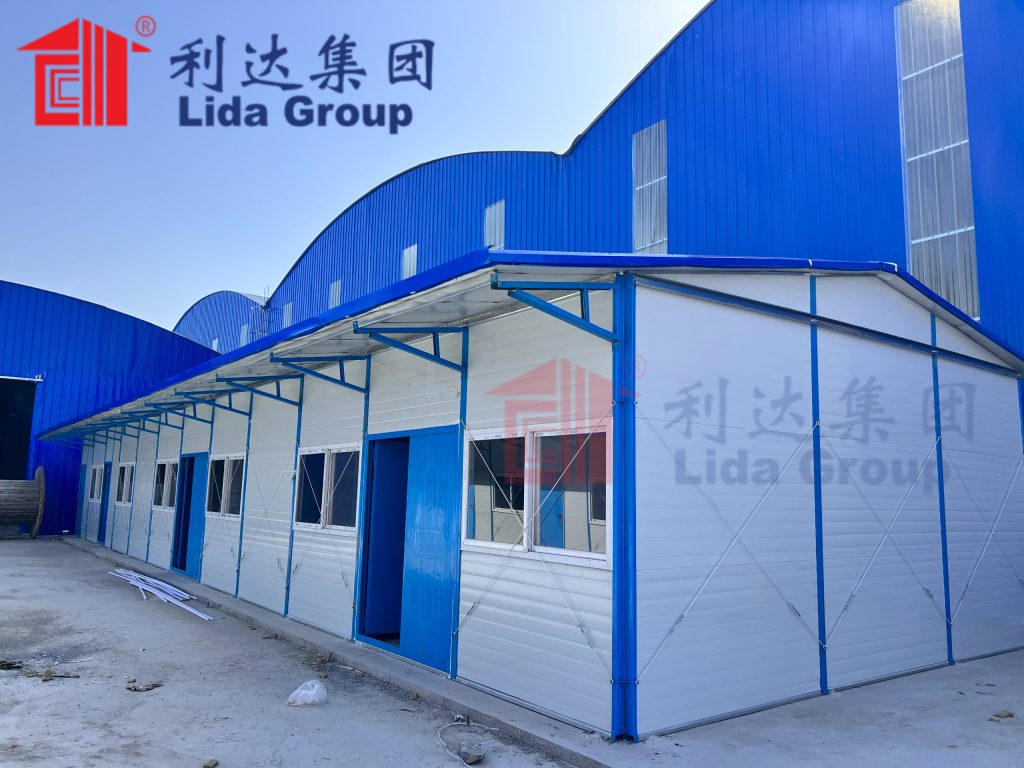
5. Comparing Lida Group’s Solution to Traditional Disaster Relief Shelter
To fully grasp the transformative impact of Lida Group’s prefab mobile houses, it is helpful to compare them directly to traditional shelter solutions—tents, makeshift huts, and even other prefab structures. This comparison highlights why Lida Group’s houses have become the preferred choice for many aid organizations.
|
Feature
|
Lida Group Prefab Mobile Houses
|
Tents
|
Makeshift Huts
|
Other Prefab Structures
|
|
Deployment Time
|
1–2 weeks (global delivery)
|
5–10 days (fast, but limited quantity)
|
Varies (depends on local materials)
|
2–4 weeks (often require specialized shipping)
|
|
Assembly Time
|
3–6 hours (2–3 unskilled workers)
|
1–2 hours (but requires setup of camps)
|
1–3 days (skilled labor needed)
|
1–2 days (skilled labor needed)
|
|
Durability
|
5+ years (resists wind, rain, fire)
|
3–6 months (fragile in harsh conditions)
|
1–3 months (prone to collapse)
|
3–5 years (but less resistant to extreme weather)
|
|
Cost (per unit)
|
$1,200 (one-time cost)
|
\(150–\)300 (replaced every 3–6 months)
|
\(50–\)100 (but requires frequent repairs)
|
\(2,000–\)3,000 (higher upfront cost)
|
|
Maintenance Cost (per year)
|
$50
|
$150
|
$100
|
\(100–\)150
|
|
Comfort & Privacy
|
High (solid walls, insulation, lockable doors)
|
Low (thin fabric, no privacy, poor insulation)
|
Very low (no insulation, no privacy)
|
Medium (some insulation, but less user-centric design)
|
|
Sustainability
|
High (recyclable materials, low-VOC)
|
Low (non-recyclable fabric, single-use)
|
Very low (wasteful use of materials)
|
Medium (some recyclable materials, but higher carbon footprint)
|
The table makes clear that Lida Group’s houses outperform traditional solutions in nearly every category. They are faster to deploy than other prefab structures, more durable than tents and makeshift huts, and more cost-effective over the long term. Most importantly, they prioritize the comfort and dignity of survivors—something that is often overlooked in emergency shelter design.
6. The Future of Disaster Relief: Lida Group’s Ongoing Innovations
Lida Group is not resting on its laurels. As climate change intensifies—leading to more frequent and severe natural disasters—the company is investing in new innovations to make its prefab mobile houses even more effective for disaster relief.
6.1 Climate-Adapted Designs
One key area of focus is climate adaptation. Lida Group is developing specialized versions of its houses for different disaster scenarios:
- Flood-Resistant Houses: These houses will feature even higher elevated floors (up to 1 meter) and water-resistant electrical systems, making them suitable for long-term flooding.
- Wildfire-Resistant Houses: For regions prone to wildfires (such as California, Australia, and the Mediterranean), the company is testing fire-retardant sandwich panels with a rock wool core (which is non-combustible) and heat-resistant steel facings.
- Cold-Weather Houses: For polar or high-altitude regions (such as Alaska or the Himalayas), Lida Group is adding extra insulation layers and double-paned windows to improve heat retention.
6.2 Smart Shelter Technology
Lida Group is also integrating smart technology into its houses to improve safety and efficiency. The company is testing solar-powered sensors that can monitor temperature, humidity, and air quality inside the house, alerting occupants to potential risks (such as mold growth or carbon monoxide buildup). It is also developing a mobile app that provides step-by-step assembly instructions in multiple languages, as well as a maintenance checklist—making it easier for local communities to care for the houses.
6.3 Localized Production
To further reduce delivery time and support local economies, Lida Group plans to build regional manufacturing facilities in disaster-prone areas. The first of these facilities will open in Kenya in 2024, followed by facilities in Brazil and Mexico in 2025. These facilities will produce house modules using local materials (such as locally sourced steel) and employ local workers, cutting down on transit time and carbon emissions.
6.4 Partnerships for Scale
Finally, Lida Group is expanding its partnerships with governments, NGOs, and international organizations to scale up its impact. In 2023, the company signed a three-year agreement with the World Food Programme (WFP) to provide prefab mobile houses for disaster relief efforts worldwide. The agreement will see Lida Group deploy up to 10,000 houses per year to WFP operations, focusing on regions such as sub-Saharan Africa and Southeast Asia.
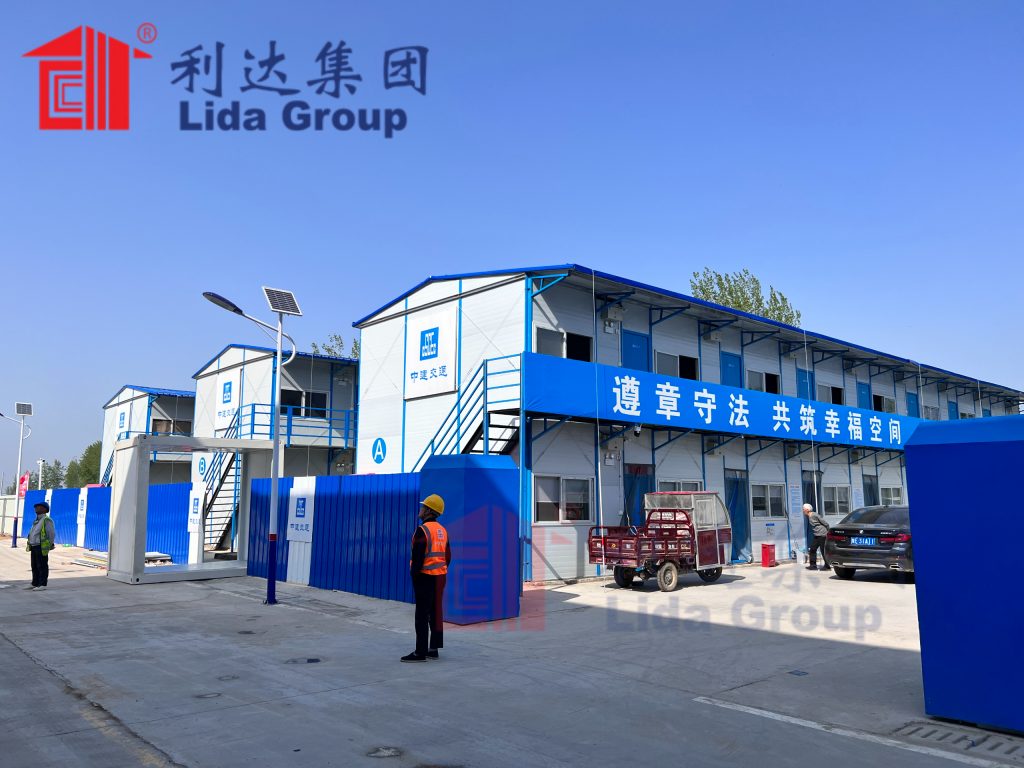
7. Conclusion
Lida Group’s prefab mobile houses have transformed disaster relief by addressing the core challenges that have long plagued emergency shelter: speed, durability, cost, and accessibility. By combining modular design, innovative materials, and user-centric features, the company has created a solution that is not just functional, but compassionate—providing survivors with a safe, dignified space to rebuild their lives after disaster.
The real-world impact of these houses is undeniable. From the mountain villages of Nepal to the flooded plains of Pakistan, Lida Group’s houses have provided shelter for hundreds of thousands of people, turning chaos into stability and despair into hope. They have outperformed traditional solutions like tents and makeshift huts, proving that emergency shelter can be both affordable and high-quality.
But Lida Group’s impact extends beyond shelter. The company’s houses have become catalysts for community recovery, serving as schools, clinics, and business hubs. They have empowered local communities, providing jobs and skills training for displaced people. And they have set a new standard for the disaster relief industry, showing that sustainability and compassion can go hand in hand with efficiency and cost-effectiveness.
As climate change continues to increase the frequency and severity of natural disasters, the need for effective disaster relief shelter will only grow. Lida Group’s ongoing innovations—from climate-adapted designs to smart technology—position the company to meet this need head-on. By expanding its production capacity, building regional facilities, and partnering with global organizations, Lida Group is poised to make an even greater impact in the years to come.
In the end, Lida Group’s prefab mobile houses are more than just buildings. They are a symbol of resilience—for survivors, for communities, and for the world. They prove that in the face of disaster, innovation and compassion can turn loss into opportunity, and suffering into hope. For millions of people displaced by natural disasters, Lida Group’s houses are not just a roof over their heads—they are a chance to start over.

Related news
-
Innovative Prefabricated Container Building Systems by Lida Group Offer Sustainable Mobile Modern Container House Options
2025-09-28 14:41:25
-
Lida Group Revolutionizes Affordable Living with Low-Cost Sandwich Panel Houses Designed as Easy-Assemble Prefab Mobile Homes
2025-10-09 17:05:39
-
Lida Group Revolutionizes Affordable Housing with Low Cost Prefab Construction of Mobile Modern Container House Solutions
2025-09-28 14:55:08
contact us
- Tel: +86-532-88966982
- Whatsapp: +86-13793209022
- E-mail: sales@lidajituan.com


